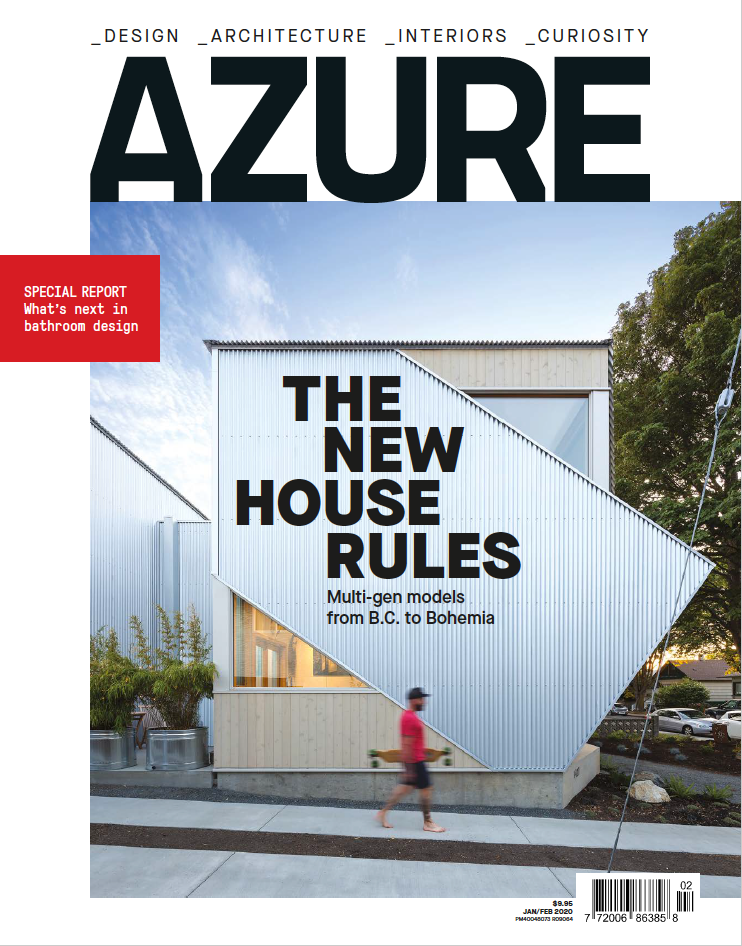
In its January/February 2020 issue, Azure explores domestic architecture establishing new house rules for living across the globe.
Multi-generational living is on the rise, bringing extended families together under one roof for a host of economic, social and cultural reasons. And just as no two families are alike, no two multi-gen models adhere to the same principles. In B.C.’s capital, for instance, D’Arcy Jones Architects takes shared living in a distinctly modern direction by shrouding two separate yet connected volumes with sheets of sculptural galvanized aluminum, while the Czech practice DDAANN links a series of traditional gable-roofed cottages outside of Prague with a central indoor-outdoor living space to create a summer home for three generations of a single family.
Meanwhile, a Jenga-like single-family house by REM’A Arquitectos nestles seamlessly into a hillside in Portugal, its staggered volumes arranged to be simultaneously private and exposed. And in the realm of multi-unit residences, Waechter Architecture is redefining the norm with the Origami complex in Portland, Oregon: The low-slung row of townhouses features sharply angled roofs and uniquely pleated surfaces that give each unit its own personality while still aligning with the neighbourhood’s existing architecture.
Also, jet-setting Chile-based architects Mauricio Pezo and Sofia von Ellrichshausen shed light on the deep philosophy that drives their unorthodox work.
Spotlight on Bathrooms
Sleek systems, (very) smart toilets and more
Landscape
Montreal’s long-neglected Expo 67 site gets a major facelift courtesy of Lemay
Good Acoustics
Cutting-edge solutions for better sound control
